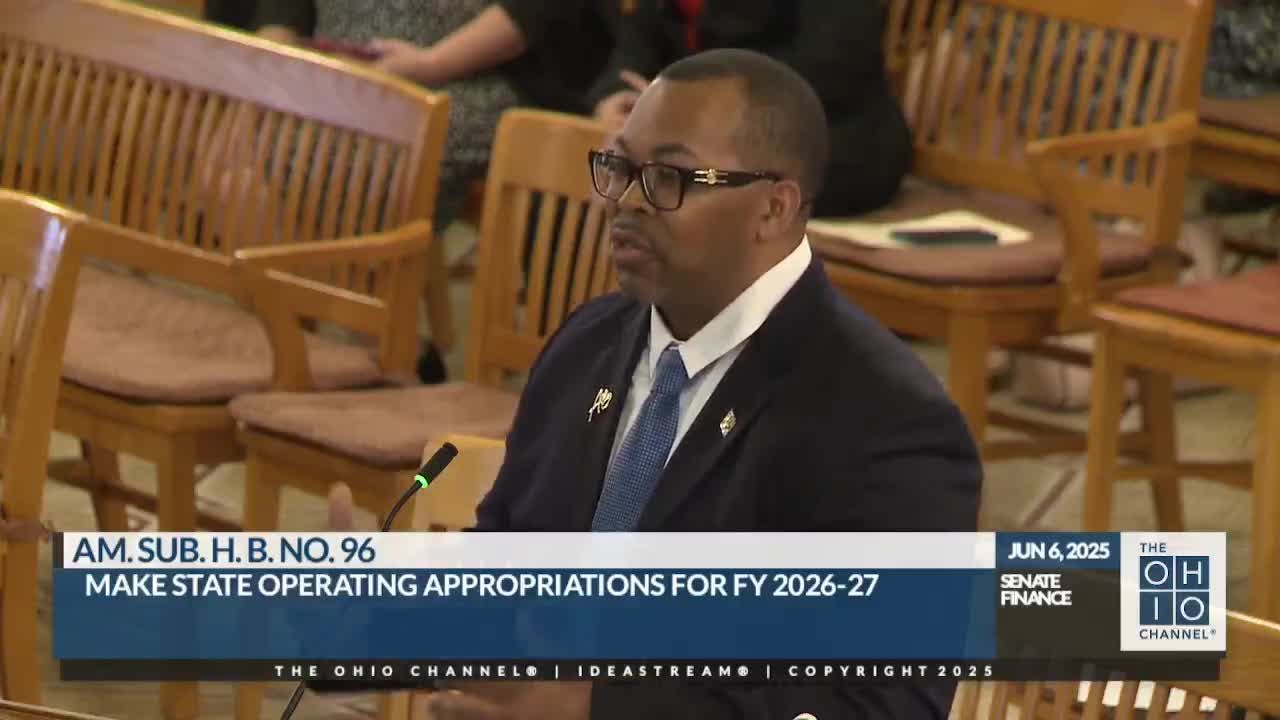Teach for America Ohio urges Senate to restore critical funding amid teacher shortages
June 06, 2025 | Finance, Senate, Committees, Legislative, Ohio
This article was created by AI summarizing key points discussed. AI makes mistakes, so for full details and context, please refer to the video of the full meeting. Please report any errors so we can fix them. Report an error »

On June 6, 2025, the Ohio Senate Finance Committee convened to discuss critical issues affecting education and workforce development in the state. The meeting highlighted significant concerns regarding teacher certification processes and funding for educational programs, particularly in light of a declining number of teachers in Ohio.
One of the key discussions centered around the certification of technicians in direct service roles. Stakeholders advocated for extending the period during which competent technicians could provide services while completing their national certification. The proposal suggested a maximum extension of 120 days, allowing technicians adequate time to apply their training effectively. This request reflects a broader concern about maintaining a skilled workforce in essential service areas, particularly as confidence in the field wanes among new entrants.
Jennifer Howard, Executive Director of Teach for America Ohio, presented compelling testimony regarding the urgent need for continued funding for the organization. Teach for America has been instrumental in addressing teacher shortages, having placed approximately 1,200 core members and alumni in Ohio schools. However, recent legislative changes have removed vital financial support from the state budget, jeopardizing the program's ability to attract and retain talent. Howard emphasized that without this funding, the state risks exacerbating the teacher shortage, which has seen over 16,000 educators leave the profession since 2020.
The committee also heard from Tish Jenkins, Superintendent of Gold Digital Academy, who advocated for a pilot program allowing online schools to implement a blended learning model. Jenkins argued that this approach would better serve at-risk students by providing necessary in-person support. She noted that while the program would not require additional funding, it would enable online schools to access funds typically reserved for traditional brick-and-mortar institutions, thereby enhancing support services for students facing various challenges.
The discussions underscored the urgent need for legislative action to address the educational landscape in Ohio. With teacher shortages and the need for innovative educational models at the forefront, the committee's decisions will have lasting implications for the state's ability to provide quality education and support for its students. As the meeting concluded, stakeholders expressed hope for a collaborative approach to restore funding and support necessary reforms, emphasizing the importance of investing in Ohio's educational future.
One of the key discussions centered around the certification of technicians in direct service roles. Stakeholders advocated for extending the period during which competent technicians could provide services while completing their national certification. The proposal suggested a maximum extension of 120 days, allowing technicians adequate time to apply their training effectively. This request reflects a broader concern about maintaining a skilled workforce in essential service areas, particularly as confidence in the field wanes among new entrants.
Jennifer Howard, Executive Director of Teach for America Ohio, presented compelling testimony regarding the urgent need for continued funding for the organization. Teach for America has been instrumental in addressing teacher shortages, having placed approximately 1,200 core members and alumni in Ohio schools. However, recent legislative changes have removed vital financial support from the state budget, jeopardizing the program's ability to attract and retain talent. Howard emphasized that without this funding, the state risks exacerbating the teacher shortage, which has seen over 16,000 educators leave the profession since 2020.
The committee also heard from Tish Jenkins, Superintendent of Gold Digital Academy, who advocated for a pilot program allowing online schools to implement a blended learning model. Jenkins argued that this approach would better serve at-risk students by providing necessary in-person support. She noted that while the program would not require additional funding, it would enable online schools to access funds typically reserved for traditional brick-and-mortar institutions, thereby enhancing support services for students facing various challenges.
The discussions underscored the urgent need for legislative action to address the educational landscape in Ohio. With teacher shortages and the need for innovative educational models at the forefront, the committee's decisions will have lasting implications for the state's ability to provide quality education and support for its students. As the meeting concluded, stakeholders expressed hope for a collaborative approach to restore funding and support necessary reforms, emphasizing the importance of investing in Ohio's educational future.
View full meeting
This article is based on a recent meeting—watch the full video and explore the complete transcript for deeper insights into the discussion.
View full meeting
